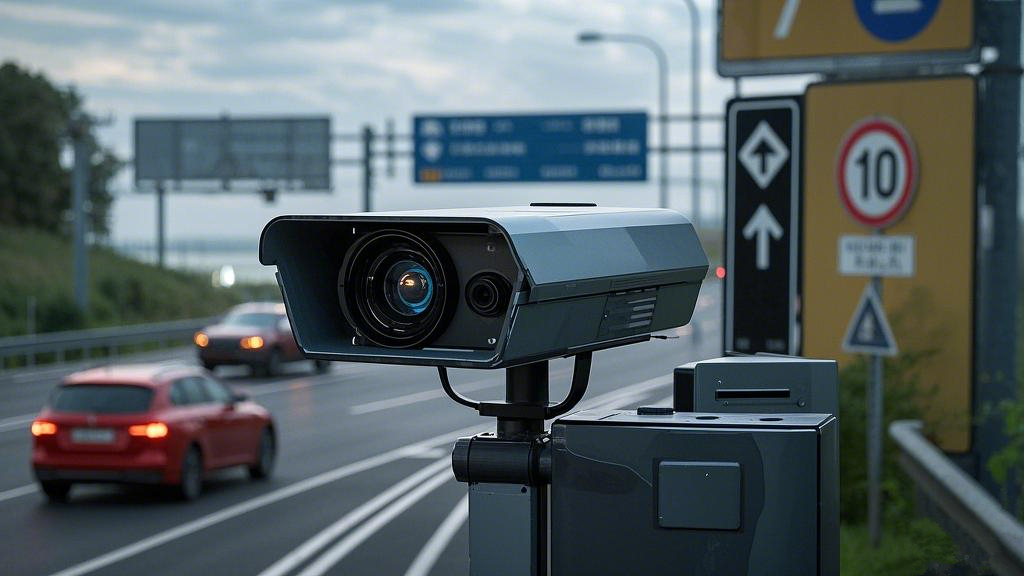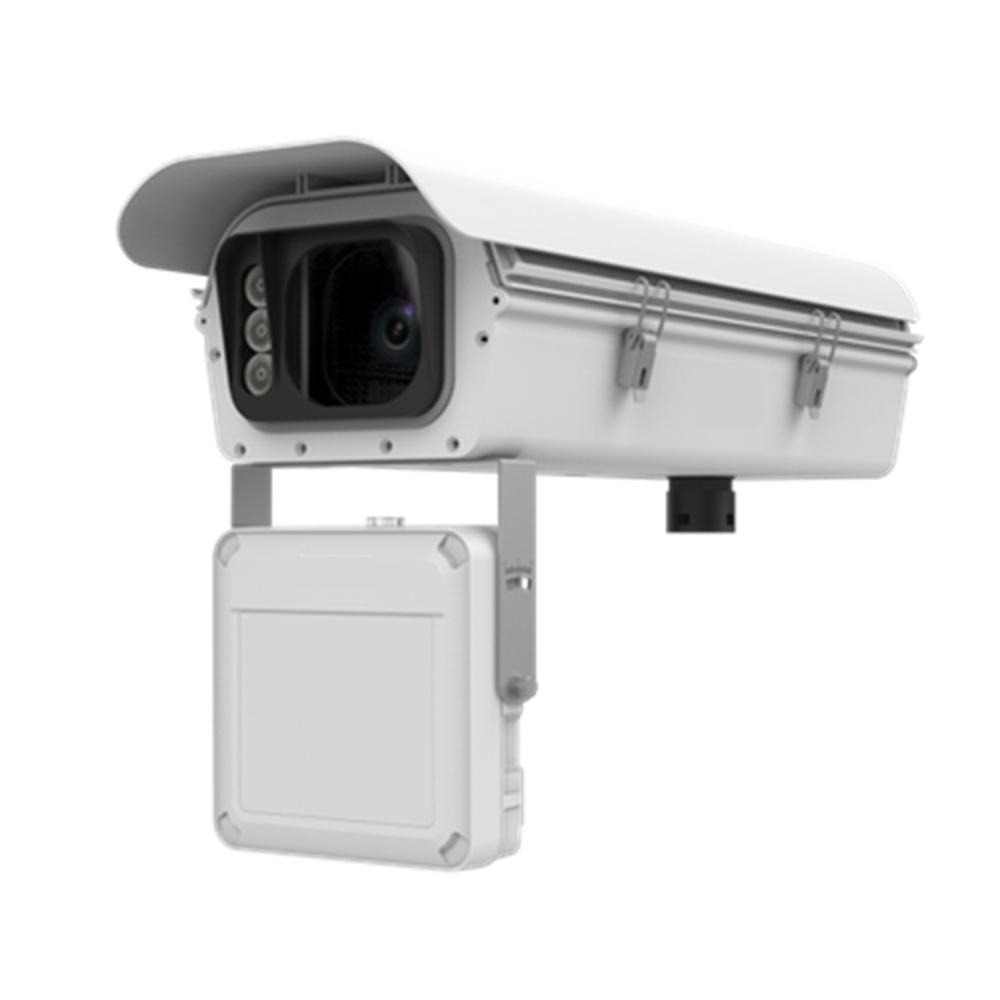Traffic enforcement camera: precise imaging, full control of license plate and speed details

Speeding has always been one of the important factors threatening road safety. Speeding not only greatly increases the probability of traffic accidents, but once accidents occur, the harm they cause is often more serious. In order to effectively curb speeding behavior and ensure road traffic safety and smoothness, various advanced traffic management devices have emerged. Among them, traffic enforcement camera play a key role in traffic enforcement with their outstanding performance, especially accurate imaging and full control over license plate and speed details.
1、 The working principle of traffic enforcement camera
A. Principle of speed detection
Traffic enforcement camera mainly detect vehicle speed through two common technical means, namely radar speed measurement and ground sensing coil speed measurement.
Radar speed measurement is based on the Doppler effect. Radar emits electromagnetic waves of a specific frequency to vehicles, and when there is relative motion between the vehicle and the radar, the frequency of the reflected electromagnetic waves will change. By calculating this frequency variation, the speed of the vehicle can be accurately determined. Radar speed measurement has the advantages of long detection distance, high speed accuracy, and fast response speed, which can quickly and accurately capture the speed of vehicles in motion.
Ground sensing coil speed measurement is achieved by burying induction coils under the road surface. When a vehicle passes through an induction coil, it will cause a change in the inductance of the coil. The detection equipment monitors and analyzes this change, combined with pre-set parameters, to calculate the vehicle’s driving speed. The stability of ground sensing coil speed measurement is good, and it can provide reliable speed data in some specific scenarios.
B. Principle of Image Capture
When the traffic enforcement camera detects a vehicle speeding, it will trigger the image capture function. Its built-in high-definition camera will quickly activate and capture images of the vehicle. The camera adopts advanced image sensor technology, which can capture clear images in an instant. At the same time, in order to ensure high-quality images can be obtained under different lighting conditions, traffic enforcement camera are usually equipped with intelligent supplementary lighting devices. In low light conditions, such as at night or in tunnels, the fill light will automatically turn on to provide sufficient light for shooting, ensuring that the captured image can clearly display the vehicle’s license plate and other key details.

2、 The Implementation of Precise Imaging Technology
A. Application of high-definition cameras
The high-definition camera used in traffic enforcement camera is one of the core components for achieving accurate imaging. These cameras have high pixels and can provide clear and delicate images. For example, some advanced traffic enforcement camera have a pixel count of up to 5 million or even higher, which can capture more image details compared to traditional low pixel cameras. High pixel resolution means that at the same shooting distance, the characters on the license plate can be more clearly distinguished, and even some subtle font features can be accurately presented.
In addition, high-definition cameras also have a wide dynamic range. In actual traffic scenarios, the lighting conditions are complex and varied, with significant differences in brightness from strong light to shaded areas. And cameras with a wide dynamic range can balance the details of both bright and dark areas in this situation, avoiding situations where bright areas are overexposed or dark areas are too dark and causing loss of details. For example, when a vehicle is driving in the sunlight, traditional cameras may not be able to see the license plate clearly due to strong light, but wide dynamic high-definition cameras can make the license plate clear and visible through intelligent adjustment.
B. Image algorithm optimization
In addition to high-definition cameras in hardware, advanced image algorithms are also key to achieving precise imaging. Image algorithms perform a series of processing and optimization on the captured raw images. Firstly, there is the image enhancement algorithm, which can improve the contrast, clarity, and color saturation of images, making the contours of license plates and vehicles more vivid. For example, by using techniques such as histogram equalization, the brightness distribution of the image can be adjusted to make the originally blurry parts clear and distinguishable.
Next is the denoising algorithm. During the image acquisition process, noise may appear in the image due to various interference factors, which can affect the image quality. The denoising algorithm can effectively remove these noise points while preserving the detailed information of the image. For example, by using algorithms such as Gaussian filtering, noise in the image can be smoothed out without losing key details such as license plate characters, making the image cleaner and clearer.
Furthermore, image distortion correction algorithms are also very important. Due to the optical characteristics and installation angle of the camera, the captured images may have a certain degree of distortion. The image distortion correction algorithm can accurately calculate and correct this distortion, restoring the objects in the image to their true shape and proportion, ensuring the correct recognition of license plate characters.
C. Intelligent supplementary lighting technology
As mentioned earlier, intelligent fill light technology is crucial for achieving precise imaging under complex lighting conditions. The intelligent fill light device of the traffic enforcement camera can automatically adjust the fill light intensity and time according to changes in ambient light. At night, the fill light will be turned on at full power to provide sufficient light for the camera, ensuring that the captured images are clear and bright. During the day, when the light is strong but the vehicle is in a shaded area, the fill light will automatically reduce its power to avoid excessive fill light causing the image to become too bright.
In addition, the design of the supplementary lighting device is also very particular. Some fill lights use special optical designs to evenly illuminate the vehicle, avoiding situations where the light is too bright or too dark in certain areas. At the same time, the flashing frequency and duration of the fill light have been carefully optimized to ensure sufficient light for shooting in an instant, without interfering with the driver’s line of sight and ensuring traffic safety.
3、 The importance of controlling license plate and speed details
A. Accuracy of traffic enforcement
Accurately grasping the details of license plates and vehicle speeds is the foundation for ensuring fair and accurate traffic enforcement. Clear license plate images can accurately determine the identity of illegal vehicles and avoid misjudgment when investigating speeding violations. Accurate speed data provides a clear basis for punishment, and according to different speeding ratios, traffic management departments can impose corresponding penalties in accordance with the law, so that offenders receive the appropriate punishment. If the license plate image is blurry or the speed data is inaccurate, it may lead to enforcement disputes, and even the inability to effectively punish illegal vehicles, affecting the authority and fairness of traffic enforcement.
B. Accident Prevention and Responsibility Determination
After a traffic accident, the license plate and speed details recorded by traffic enforcement camera can provide important clues for investigating the cause of the accident and determining responsibility. If the accident involves speeding vehicles, by retrieving data from the integrated capture machine, it is possible to accurately understand the vehicle’s speed before the accident and determine whether speeding is one of the main causes of the accident. Clear license plate information helps to quickly locate the accident vehicle and relevant responsible persons, accelerating the process of accident handling. This is of great significance for safeguarding the legitimate rights and interests of victims and ensuring social fairness and justice.
C. Traffic flow management and analysis
In addition to enforcement and accident handling, the control of license plate and speed details is also of great value for traffic flow management and analysis. By collecting and analyzing the speed data of a large number of vehicles, traffic management departments can understand the real-time traffic flow status of roads, determine which sections are prone to congestion, and which periods have high traffic flow. Based on these data, traffic management departments can develop more scientific and reasonable traffic diversion strategies, optimize the timing of traffic signals, and improve road traffic efficiency. At the same time, the analysis of license plate information can also help traffic management departments grasp the driving trajectory and travel rules of vehicles, providing strong data support for urban transportation planning and construction.
4、 Application scenarios of traffic enforcement camera
A. Expressway
Highways are sections where vehicles travel at high speeds, and speeding behavior is common. Therefore, they are also an important application scenario for traffic enforcement camera. On highways, traffic enforcement camera are usually installed at fixed speed measurement points, such as toll station entrances, exits, and some accident prone sections. These all-in-one machines can monitor the speed of passing vehicles in real time, and capture and record any speeding vehicles immediately. By strictly controlling speeding behavior, the incidence of traffic accidents on highways has been effectively reduced, ensuring the safety of the lives and property of drivers and passengers.
B. Urban roads
In urban roads, although the speed of vehicles is relatively low, due to dense population and large traffic flow, speeding can also bring serious safety hazards. The application of traffic enforcement camera in urban roads is mainly concentrated in densely populated areas such as schools, hospitals, residential areas, as well as some important traffic intersections and main roads. By monitoring the speed of vehicles in these areas, it is possible to effectively reduce traffic accidents caused by speeding and protect the safety of pedestrians. At the same time, traffic enforcement camera on urban roads can also be connected to intelligent transportation systems to achieve real-time monitoring and regulation of urban traffic flow, improving the overall operational efficiency of urban transportation.
